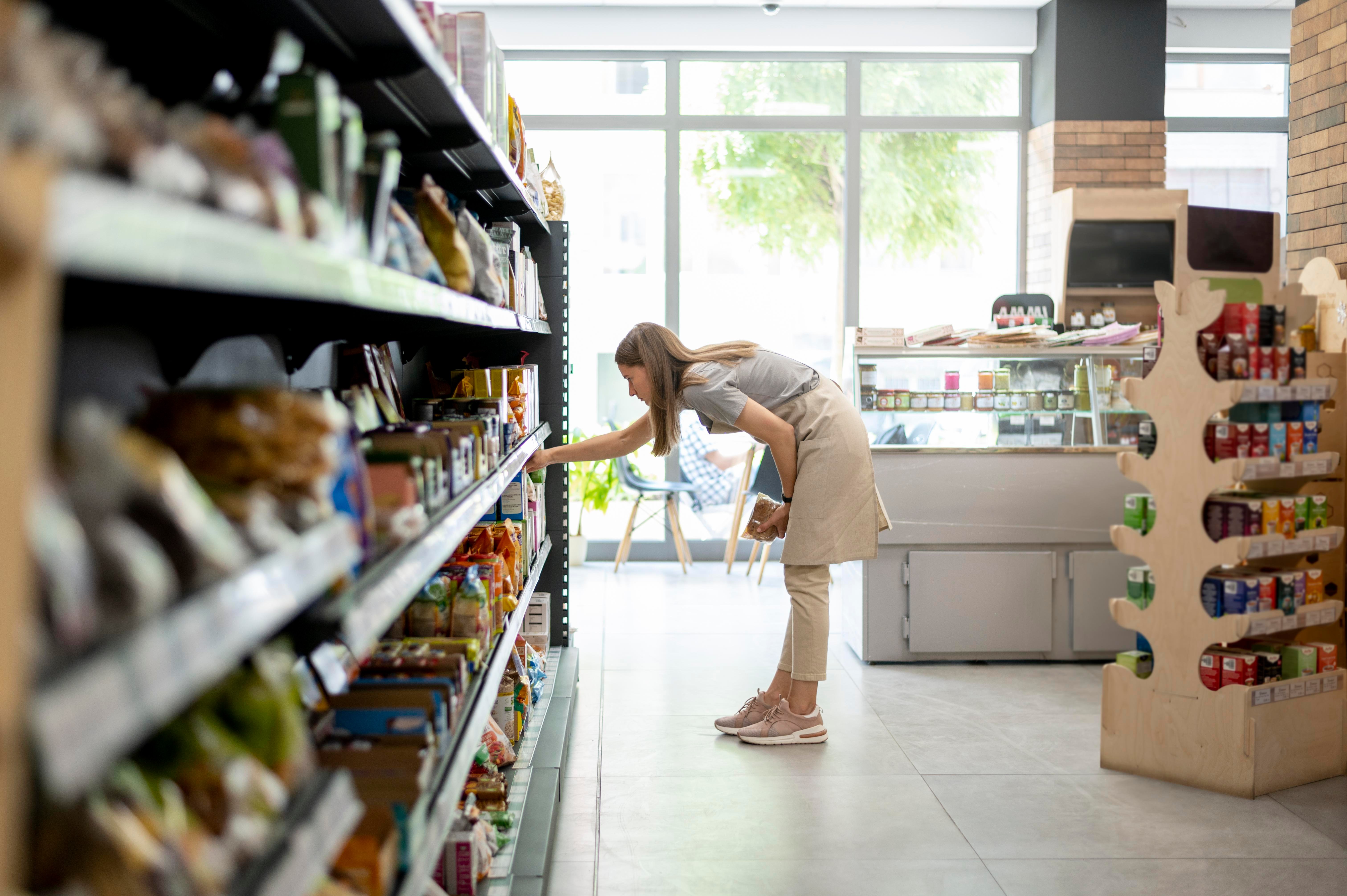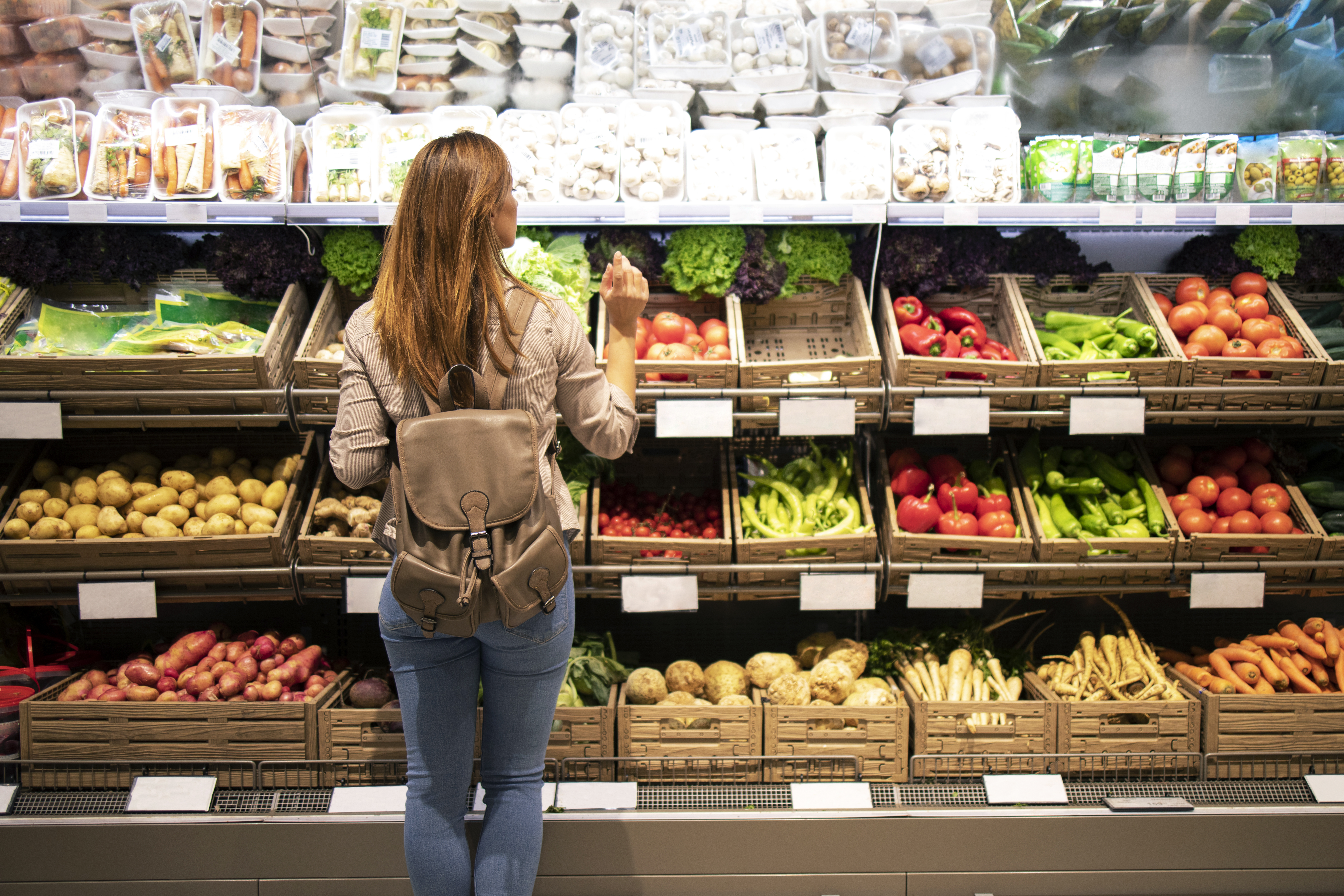Fuelled by economic fluctuations and consumers' financial constraints, the rise of discount retailers has been reshaping the European retail sector for several years.
However, in an era marked by a growing number of brands offering competitive prices and streamlined shopping experiences, how do these discounters manage to distinguish themselves from the competition?
In this article, we aim to address this question by examining how discount retailers are reshaping the European retail landscape and how they are poised to continue their trajectory in the years ahead.
Menu:
1 | Europe: the ongoing global leader in discount retail
2 | The 5 big challenges for the discount sector in 2023
1. Europe: the ongoing global leader in discount retail
Europe remains the undisputed global leader in discount retail.
On a global scale, discount stores are projected to exhibit the most robust growth among food retail channels by 2027. In this dynamic landscape, Europe stands as a trailblazer, setting the stage for other discount brands worldwide.
Projections suggest that the sector is poised to attain a global revenue of $792.4 billion by 2027.
The paramount role of Europe is demonstrated by the proportion of sales generated by discounters, whose turnover is nearly twice that of the rest of the world.
In 2027, discount channel sales in Europe are expected to reach US$517.5 billion, while the rest of the world will generate sales of US$274.9 billion.
This supremacy is further evident in the forecast that the countries holding the largest market shares are all situated within Europe (in order: Norway, Denmark, Poland, Spain, Germany, Hungary, Belgium, Turkey, Romania, Austria ..)
Outside of Europe, North America secures the second position in terms of sales, notably due to the prevalence of Dollar stores.
However, discount retail, while on the rise, is anticipated to maintain a relatively low share in several regions worldwide.
Over the next five years, discounting is projected to constitute just 2.1% of sales in Africa and the Middle East. In Asia, budget-friendly brands are expected to make up only 1.2% of sales, although Japan is poised to stand out with a substantial discount market share of 12.3%.
In conclusion, while Europe remains the primary driver of global discount retail, showcasing its supremacy through market share and sector influence, the growth of discounters will impact all countries to varying degrees.
2. The 5 big challenges for the discount sector in 2023
2.1. The quest for value: the number one trend
Having navigated the economic challenges of 2022 and confronted predictions suggesting a continued uncertain outlook in the near future, low-cost retailers are now looking to highlight the value of their offerings as a means of setting themselves apart.
Several strategies can be used by discounters to differentiate themselves.
1. Personalised value
In the times ahead, discount retailers will face the dual challenge of maintaining competitive prices while also prioritising customer retention.
They will be compelled to develop more tailored loyalty programs that align with the unique preferences of their target consumers. It becomes imperative to meet their expectations and tailor promotions to suit the distinct dynamics of each market.
2. Own brand goods
Discount retailers must ensure a balanced offering on their shelves between their own brand goods and third-party brands to consistently provide added value to consumers across their entire product range.
Nevertheless, it is by focusing their resources and efforts towards their own brands that discounters will thrive in setting themselves apart.
3. Communication to combat price alignment
Discounters have always been very adept with social media and must continue to use these channels to fight back and show that they are still ahead on value while still managing to maintain attractive and more affordable prices.
2.2. The "supermarketisation" of discounters
Major retailers are striving to implement the strategies pioneered by discounters, with a particular focus on enhancing in-store efficiency. At the same time, discount brands are evolving to move closer to the supermarket model:
1. Improving in-store spaces and atmosphere
Discount retailers are actively working on enhancing the welcoming aspect of their stores to create a more enjoyable and inviting ambience, ultimately enhancing the overall shopping experience for consumers.
For instance, Aldi has already made improvements to its store ambience in China and Australia by implementing warmer lighting, altering flooring materials, and simplifying shelf navigation.
Lidl has been pursuing a similar path for several years, continuously enhancing its stores to create a more pleasant environment. From the introduction of automated checkouts to the reconfiguration of its shelves, the discounter has taken consumer motivations into consideration, aiming to offer a shopping experience that aligns with, and even surpasses, expected standards, departing from the traditional perception of hard discounting.
It is likely that other discounters will follow suit, potentially blurring the lines between themselves and more traditional supermarkets.
However, it's essential to note that there is a risk of homogenisation, where all in-store experiences start to resemble each other. To avoid this, both discounters and supermarkets will need to find ways to distinguish themselves from one another.
2. Diversification of snacking options
Discount retailers are progressively expanding their snack assortments and take-out food options to compete with other medium and large-scale brands.
For instance, the discounter Mercadona has introduced a 'ready-to-eat' service within its stores. Customers can now visit the counter and select from a menu of over 35 different items to find the perfect takeaway meal.
3. Partnerships to improve and expand key categories
Today, discount retailers are leveraging well-known brands to enhance the appeal of their product offerings.
For instance, Lidl France has collaborated with L'Oréal to enhance its health and beauty section, resulting in the introduction of the Beauty Box concept.
The outcome has been an overall increase in product variety on the shelves and a decrease in the share of private label products in this category, dropping from 90% to 70%.
Furthermore, discount chains and fixed-price stores like Poundland in the United Kingdom, Action in Europe, and Dollar Tree in the United States, traditionally known for non-food items, are diversifying their range of food products. This expansion aims to encourage more frequent store visits and boost purchase volumes.
2.3. An increasingly selective expansion strategy
For several years, discount retailers experienced rapid expansion in specific markets, setting ambitious targets for new store openings.
However, this landscape is undergoing a shift following the failures of some discounters to achieve their large-scale objectives. This underwhelming outcome is justified, as finding new retail spaces has become increasingly challenging. Costs have escalated, and competition has intensified.
As a result, we are witnessing more of a focus on the modernisation of existing networks and a significant number of store replacements. Discount retailers are striving to maximize the profitability of their current locations.
For instance, Netto (Salling Group) in Denmark is a case in point. Rather than investing in expanding its store network, the company has chosen a long-term strategy of modernising all its stores by adopting the new 3.0 concept.

2.4. Simplification of non-food products
In the aftermath of the economic crisis in 2022, discounters experienced a notable downturn in their non-food sales due to diminished household purchasing power.
By August 2022, Lidl's non-food sales had dropped below 10% of their total sales in most markets, falling short of the 15% target.
Should consumer purchasing power continue to decline, discounters will need to reassess the pricing and in-store presentation of their non-food products to maintain their appeal.
1. Multi-SKU (Stock Keeping Units) products
The acronym 'SKU' stands for 'Stock Keeping Unit' in English.
An SKU is a unique alphanumeric code assigned to each specific product within an inventory or stock management system. It serves to distinctly identify each item, enabling companies to efficiently oversee their inventory by distinguishing variants or models of a product.
A fruitful collaboration between Lidl and Mattel has enabled the latter to provide a range of multi-SKU toys in the lead-up to Christmas.
These diverse versions allowed the discounter to cater to the preferences and expectations of a broad spectrum of young consumers, maximising the appeal of its brand during the holiday season.
Such examples are anticipated to become more prevalent in the future, particularly for seasonal events within the non-food sector.
2.5. Sustainability: a unifying principle, not a choice
Sustainable development will continue to be a top priority in the years ahead. In 2022, it served as a guiding principle for emerging sustainable trends, but it has now evolved into an imperative for all industries, with low-cost brands being no exception.
While all discount retailers have established ambitious sustainable development goals, they must implement a range of measures to achieve these objectives in the coming years. (For more insights: How to Integrate Your Supply Chain into the Circular Economy)
Furthermore, discounters must effectively communicate their sustainable development initiatives so that consumers recognise that the efficiency model employed by discount retailers can also be environmentally sustainable.
1. Short supply chains in the spotlight
Local and seasonal consumption stands out as a key trend for 2023, and discount retailers are well-positioned to capitalise on it.
Many of them have already established strong connections with local suppliers and are actively promoting these partnerships to consumers.
Furthermore, discount retailers must make the necessary efforts to integrate the circular economy into their supply chain, especially by:
-
Promoting the adoption of reusable and recyclable packaging
-
Embracing more sustainable transportation methods for product distribution
-
Implementing a sourcing policy that emphasises the selection of eco-friendly suppliers and partners.
2. The development of vegan food ranges
Health and sustainability are frequently linked in the minds of consumers, with many opting for meat-free products because of their environmentally friendly attributes.
Discount retailers, in response to increasing demand in this category, are expanding their vegan product lines, including offerings like Lidl's Vemondo brand.

Conclusion
To sum up, discount retailers are reshaping the landscape of retail in Europe and globally, adjusting to evolving consumer preferences while maintaining their prominent role in the discount market. Their capacity for innovation and responsiveness to consumer demands will remain pivotal for their sustained success in the years ahead.
Are you interested in joining a pallet pool?
Our teams are available to assist you and ensure a smooth transition towards making the change. Contact us today!



